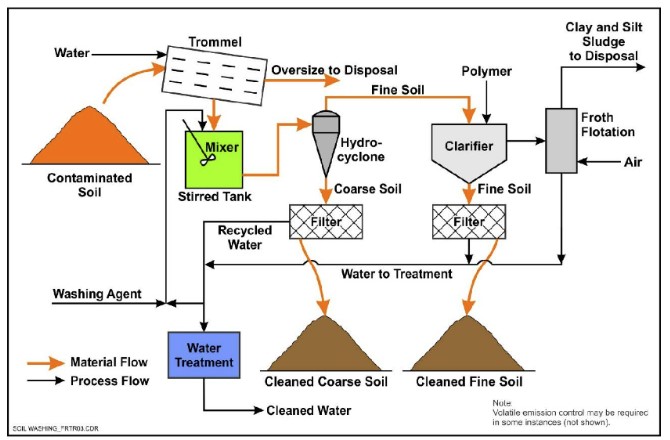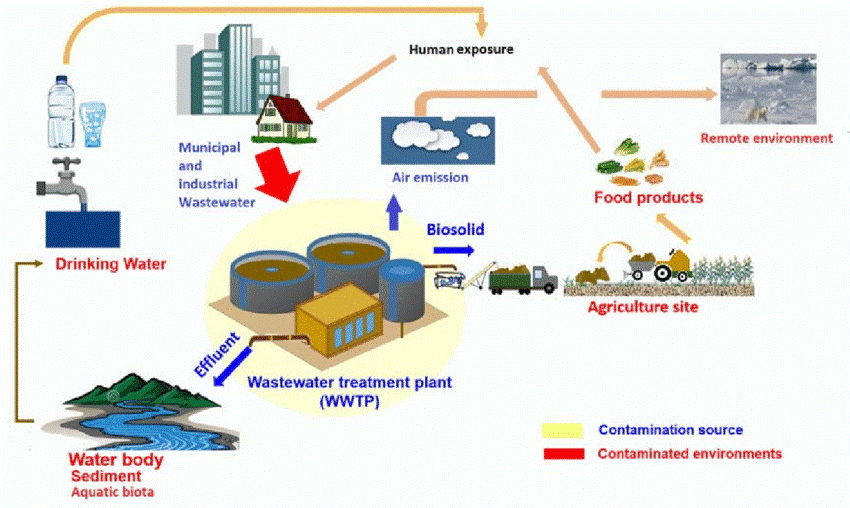M270 Waste Management: An Innovative Solution for Managing Harmful Waste
Wiki Article
Exactly How PFAS Treatment Ensures Tidy and Lasting Water
The presence of PFAS, typically known as "for life chemicals," postures considerable challenges to water top quality and public health. The effects of these therapies prolong beyond instant wellness benefits; they elevate vital inquiries regarding lasting water monitoring methods that need to be addressed to ensure a durable future.
Understanding PFAS Contamination
PFAS, or per- and polyfluoroalkyl substances, have become a significant environmental issue because of their extensive occurrence and determination in the environment. These synthetic chemicals have actually been used in numerous commercial applications and consumer products, consisting of non-stick cooking equipment, water resistant clothes, and food product packaging, because of their special properties such as water and oil resistance.The contamination of dirt and water resources by PFAS takes place mostly via commercial discharges, firefighting foam use, and seeping from land fills. pfas management. As soon as released, these materials are immune to degradation, bring about their build-up in the environment. This persistence raises crucial problems, as PFAS can travel cross countries with groundwater and surface water systems, affecting alcohol consumption water supplies and ecosystems

Wellness Threats of PFAS
The perseverance of PFAS in the setting elevates considerable health and wellness worries for individuals subjected to these substances. Called "permanently chemicals," PFAS do not break down quickly and can gather in human bodies with time. Study has linked PFAS exposure to various adverse wellness results, consisting of body immune system dysfunction, liver damage, and boosted threat of certain cancers cells - pfas management. Significantly, research studies have revealed elevated cholesterol degrees and prospective effect on reproductive and developmental health and wellness, particularly in expectant individuals and babies.The universality of PFAS in customer items, such as non-stick pots and pans, water-repellent fabrics, and food product packaging, further enhances the threat of direct exposure. Consuming water infected with PFAS is a considerable concern, as these chemicals can leach into groundwater sources. At risk populaces, consisting of children and those living near commercial websites, may face increased risks because of their establishing systems and possible for greater exposure degrees.
As understanding of these health risks proceeds to expand, governing agencies are beginning to develop standards for PFAS degrees in drinking water. Public health efforts are vital to reduce direct exposure and protect communities from the long-lasting results of these dangerous materials.

Cutting-edge Treatment Technologies
How can we successfully tackle the difficulties posed by PFAS contamination in water resources? Innovative treatment technologies are arising as important solutions in the mission for tidy water. These methods concentrate on the elimination or devastation of per- and polyfluoroalkyl compounds (PFAS), which are well-known for their determination in the setting.One promising technique is adsorption making use of innovative materials, such as activated carbon and ion exchange resins. These products have actually shown effectiveness in recording PFAS particles from water. Another notable innovation pfas waste management is membrane filtration, which makes use of nanofiltration and reverse osmosis to different pollutants at the molecular degree, hence providing an obstacle versus PFAS.
Furthermore, progressed oxidation procedures (AOPs) use solid oxidants to break down PFAS compounds into harmless byproducts. This method is particularly effective for dealing with very infected water resources. Bioremediation strategies, using details microbes, are additionally being discovered to degrade PFAS.
As research proceeds, crossbreed systems that incorporate several innovations may use improved performance, resolving the intricacies of PFAS contamination. The growth and implementation of these cutting-edge therapy modern technologies are crucial actions toward guaranteeing the security and sustainability of our water resources.
Advantages of Reliable PFAS Therapy
Successfully treating PFAS contamination in water resources substantially improves public health and ecological safety. PFAS, usually described as "forever chemicals," are immune to degradation and can gather in the human body, bring about severe health dangers such as cancer, liver damages, and immune system disorder. By implementing efficient therapy techniques, areas can decrease direct exposure to these damaging substances, eventually boosting the health end results of their populations.
Additionally, effective PFAS treatment adds to the preservation of regional ecosystems. Polluted water can adversely impact marine life and disrupt the delicate equilibrium of neighborhood habitats. By making sure tidy water, treatment processes secure biodiversity and maintain ecological stability.
In addition, effective PFAS remediation can promote public self-confidence in water quality. When communities are guaranteed that their alcohol consumption water is without hazardous pollutants, it advertises a feeling of safety and well-being. This count on is crucial for community engagement and support for continuous water monitoring campaigns.
Future of Water Sustainability
Amid growing concerns regarding water high quality and shortage, the future of water sustainability pivots on cutting-edge approaches and collaborative efforts. As neighborhoods face the looming risks of pollutants like PFAS, the growth of innovative therapy modern technologies is essential. These technologies not only focus on the removal of damaging compounds however likewise promote the reuse and recycling of water, thus decreasing general demand.Moreover, effective water administration plays a crucial role in ensuring lasting techniques. Policymakers need to integrate scientific research with regulatory structures to develop clear standards for water use and therapy. Stakeholder engagement, consisting of neighborhood neighborhoods and markets, fosters a feeling of common responsibility and urges lasting methods across numerous markets.
Financial investment in facilities is also critical; upgrading aging systems to include modern-day filtering and filtration techniques can considerably enhance water top quality. Welcoming eco-friendly technologies, such as natural filtration systems, can supply environmentally friendly remedies.
Ultimately, the future of water sustainability exists in an alternative approach that integrates modern technology, policy, and neighborhood participation. By prioritizing these components, we can protect our water sources for generations to come, making sure tidy and sustainable water for all.
Final Thought
In verdict, the efficient therapy of PFAS is essential for making sure tidy and sustainable water. By employing sophisticated modern technologies such as activated carbon adsorption, membrane layer filtration, and advanced oxidation processes, areas can considerably lower the health dangers connected with these contaminants. Moreover, the assimilation of these treatment methods supports environment defense and enhances biodiversity. Eventually, durable PFAS therapy techniques contribute to long-lasting durability in water administration, cultivating public trust fund in water top quality and advertising lasting techniques.Report this wiki page